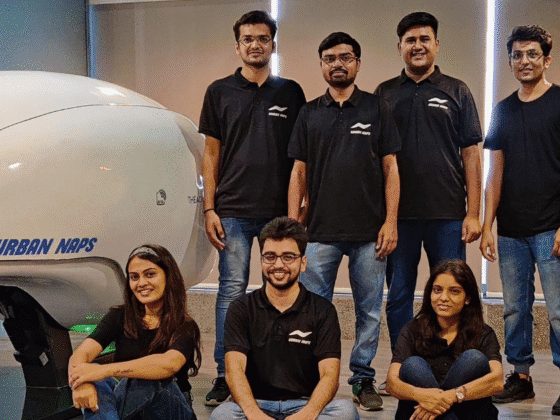
Western architecture is characterized by structural changes that progress in the form of economic evolution from ancient times to the present era. Western architecture is designed to provide an economical, comfortable and modern lifestyle. However, the problem lies in the fact that western architecture uses materials that are not sustainable in terms of providing thermal cooling to the overall space.
Since modern architecture is a dominant player in today’s world, this article focuses on the effect such infrastructure creates in the environment. Western infrastructure is inadequate in cooling the Earth naturally.
Its dependence on artificial cooling mechanisms such as air conditioning units further deteriorates the environment by pushing out hot air from inside the housing units into the streets, leading to persistent heat waves throughout the country.
The problem of heating the Earth is a growing issue that must be dealt with immediately to correct our actions before it is too late. On the other hand, vernacular infrastructure is fundamentally equipped with natural cooling properties. Thus, it is the solution to be kept in mind if heating concerns are caused by the westernization of infrastructure in the Indian economy.
Rethinking Architecture In India

Most practices today are moving towards sustainability, including agriculture. Agricultural practices are shifting towards using more eco-friendly approaches to constructing buildings, roads, and bridges.
The approach of architectural development in India must be restructured to incorporate various aspects of eco-friendly and sustainable means of cooling the environment. Such drastic measures have to be taken to make things better because cooling the atmosphere is necessary to maintain ecological and environmental balance.
Thermal cooling is a developmental necessity in the wake of the rapidly heating atmosphere of the world. The heat wave is created due to a rise in Earth’s temperatures leading to an overall hot climate. Hot climates are difficult to adjust to as humans were not built to withstand extreme temperatures.
Therefore, to cool down the temperature of the environment, we must use natural earthly materials such as stones and bricks. A shift in thinking is crucial to developing self-cooling infrastructure in the Indian economy in the place of western-style buildings dependent on external cooling mechanisms such as air conditioning units.
It would be safer to use natural materials in building houses because of their inherent cooling properties.
Western Architecture Copy-Paste
Western architecture spread through the world as it was seen as elite and sophisticated. More and more people thought the western skyscrapers and glass buildings were modern and were a delight to the eyes. So, the shift from traditional practices towards using more cement and steel began early in developing and vulnerable countries such as India. Indians did not realize how their fascination with modern infrastructure was a utopian dream which destroyed the roots of sustainable architecture in India.
Technological advances over time created a need for westernization in our infrastructure techniques. Moreover, the rise in international trade was mainly because of the importation of materials that were manufactured in other countries across the globe. Western architecture does not use sustainable construction materials and contributes to a heavy carbon footprint.
Western infrastructure building consumes a lot of resources to sustain itself. As a result, it leads to intense greenhouse gas emissions, which is the leading cause of India’s rise in overall temperatures. Western infrastructure is rapidly heating the environment because of its rampant use of energy through and through the standardized housing system.
Loss Of Traditional Architecture

Ingenious ways of construction ensured that the materials used were economical and eco-friendly. Ancient practices were highly inclined towards comfort and safety rather than aesthetic infrastructure and cost-effective techniques. The rise in technology worldwide has created a significant need to urbanize and modernize infrastructure ideals. This has led to the sidelining of age-old traditions of Indian infrastructure management. The loss of traditional construction methods highlights the lessons learned from the past. In contrast, western ideals are proving to the detriment to our society.
Traditional architectural methods did not require any reliance on materials that had to be manufactured. Instead, greater importance was placed on locally available materials such as stones, cow dung, and hand-made bricks. In vernacular infrastructure, the methods of construction of houses were sustainable and practical, and the buildings were designed to be energy-efficient. Traditional construction methods believed in protecting the surrounding ecosystems, unlike western ideals.
Need For Course-Correcting
Differential analysis of western infrastructure norms and the vernacular techniques of housing infrastructure is necessary to develop the premise of the argument stating that western architecture is ruining the climate conditions of India. In other words, modern housing facilities require air conditioning to beat the heat that is collected inside the houses.
As a result of the constant requirement of artificial cooling, the AC units push our hot air into the streets, which worsens the country’s overall climate, leading to more heating. Compared to vernacular methods of building houses, there is no need for artificially cooling the interiors of the homes as the materials used are natural coolers, and they preserve the environment rather than deteriorate the impact of global warming.
National Cooling Plan (2019)
The plan is intended to build an energy-efficient economy whose sole purpose is to provide thermal cooling and socio-economic climate-related benefits. It has the efforts and contributions of various ministries such as the Ministry of Agriculture and Farmers’ Welfare, Ministry of Housing and Urban Affairs, Ministry of Power, Ministry of Road Transport and Highways, Ministry of Skill Development, and so on.
To build the roadmap and collect relevant information for seeking the goals of Sustainable Development in the Indian economy. An effort of the government toward restructuring and remodeling India’s infrastructural needs is highlighted in the Cooling plan proposed by various organizations and government bodies.
The aim is to provide standardized cooling mechanisms that consume less energy and do not require a higher maintenance cost. Since the Indian climate is tropical, demand for the rise in cooling systems is predicted to surge into the economy at a higher rate in the future, starting from today. Thus, the government’s action plan addresses these cooling needs by laying down a blueprint for various intermediaries outlining methods of incorporating cooling mechanisms into the present infrastructure of the country.
Conclusion
Modern architecture is indeed increasing the impact of climate change in India. It is pertinent to remember that vernacular or traditional architecture upholds those fundamental principles of cooling down the Earth rather than trapping heat in a box house architecture. Western infrastructure copy-pasting is not working for India; it is high time we realize that we need to rethink and reconcile our ideologies around sustainable architecture in India. Indian infrastructure is slowly shifting from western architectural influence to green, eco-friendly, and energy-preserving urban design methods.
Interestingly, the shift towards a net-positive architecture would be wise to give back more than what is taken from the environment. Hence, sustainable infrastructure methods in India have prevailed in the traditional approaches that need to be revisited and brought back into use.
Western ideals of infrastructure are not suitable in the Indian context. Architects’ takeaway should be using earthen materials in construction to reduce the demand for artificial cooling systems in urban households.

 Add to favorites
Add to favorites








